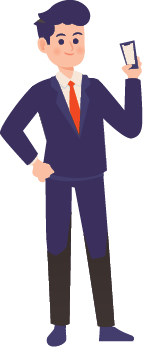
For business owners who operate from their own buildings, grappling with the current economic uncertainties have led them to consider ways to earn some cash from their properties. Market observers have noticed a trend among cash-strapped building owners who operate or who are already taking up space in the same building, to sell it and remain in the building as a tenant.
Under a sale and leaseback transaction, a building previously owned by a company is sold and is then leased back to the seller for a term of about 10 to 15 years.
It is useful when companies need to utilise the capital invested in their building for other investments, but still need to occupy the building in order to operate. For the new owners or investors, this strategy provides an investment with a steady stream of income.
According to industry experts, building owners are becoming more open to this option while the investor demand for such sale and leaseback properties is strong for industrial properties.
The trend could be the result of concerns over the region’s economic outlook given China’s economic slowdown, the US–China trade war and the global downturn in consumer goods demand, Knight Frank Malaysia executive director of capital markets James Buckley tells EdgeProp.my.
“We have seen a pick-up in the number of enquiries from owners considering sale and leasebacks as it allows companies to easily release cash to provide extra working capital that can be put into financing the expansion of the existing business, purchase new plant equipment or invest in new business opportunities.
“Hence, any real estate-intensive organisation such as logistic companies, industrial firms, government, universities, schools and hospitals should really question whether they can do something more useful with the capital than just buying their own properties,” he says.
CapVen Consultancy head of investment and consultancy Serena Yeong considers the sale and leaseback move as a good way for sellers to raise funds without disrupting their business as they don’t need to relocate their business operations. They may even be able to buy back the building after the agreed lease period ends should they wish to do so.
The demand for sale and leaseback properties has always been there, underpinned by institutional investors such as real estate investment trusts (REITs), insurance and pension funds and government-linked corporations, due to its predictable long-term income and potential for growth in the value of the asset over time.
“Usually, the investors are institutional and not individuals because the amount of investment usually starts from RM50 million and above,” says Yeong.
Of the institutional investors, pension funds and insurance companies in particular require secure cash flows that rise with inflation and the longevity of long lease real estate is very appealing to them as it matches their long-term liabilities, notes Buckley.
“In a market where the standard commercial lease term is three years, properties on long leases of 10 to 15 years and above are rare. But when they do come to market, there is always a strong investor demand,” he says.
A sale and leaseback property usually carries a net rental yield of some 5% to 7% over a minimum 10-year lease period, with industrial properties being preferred by investors in general, according to Yeong.
“Industrial properties such as warehouses, factories and logistics facilities often fetch a 7% net yield after deducting the building insurance, assessment tax and maintenance cost. They are preferred by investors due to the growing industrial market. On top of that, they are easier to manage compared with commercial office buildings that are usually multi-tenanted,” she elaborates.
Besides private companies, governments can also opt for sale and leaseback to improve their fiscal position, says Buckley.
“Governments around the world are short of money and Malaysia is no exception! The Malaysian government is struggling to bring the budget deficit down to 3% of GDP (gross domestic products) by its target date of next year. Meanwhile, national debt is around 80% of GDP, which is one of the highest in the region. One simple way to raise money is to dispose some of the property that they own and then lease them back,” he adds.
Prospective sellers and buyers
Buckley suggests that building owners should first get professional advice to find out the estimated value under different leaseback periods.
“Asking for a valuation to compare the value of the building sold assuming vacant possession, a short lease of three years and a long lease of 10 to 15 years would be a good start to get a feel for the potential differences in value. Following that, the property is best marketed widely to the right target market with a consistent message,” he says.
A short leaseback period will make the sale less attractive as investors don’t want the hassle of searching for a new tenant after such a short period, says Yeong.
“Hence, a minimum period of 10 years is preferred by investors, especially when the sale value is RM50 million and above,” she shares.
Nevertheless, a shorter leaseback period might still be interesting to investors if the property has strong redevelopment potential, offers Buckley.
“This is because the property will remain income-producing whilst a development scheme is worked up and a development approval obtained,” he says.
As for investors, they should consider the covenant strength of the tenant and the sustainability of their business, apart from the price and net rental returns from the property, he adds.
“Will they be in business in 10 to 15 years’ time and afford to continue to pay the rent? In addition, investors should consider the repair and maintenance provisions in the lease as well as the ability to adjust the rent over the life of the investment,” he notes.
How do you start?

• Engage professional advice
• Find out the valuations of the property under different leaseback periods
• Determine the leaseback period, selling price and yield
• Structure the details such as the obligations of both parties under the deal
• Run a market campaign on the property to the target market
Benefits of the sale and leaseback option
For the seller/owner
• Release capital for re-investment
• Improve balance sheet
• Continue to operate from the same premises after sale
• Fixed monthly rental payments make cash flow management a simpler task
For the buyer/investor
• Steady stream of long-term income
• Enjoy the potential for growth in the property value
• Certainty and stability in the investment given the long- term lease
• A good choice for yield-focus investors
This story first appeared in the EdgeProp.my pullout on Sept 27, 2019. You can access back issues here.
TOP PICKS BY EDGEPROP

Nusajaya Tech Park
Iskandar Puteri (Nusajaya), Johor

ECO BUSINESS PARK 5
Bandar Puncak Alam, Selangor

Charming Essex, Setia Eco Templer
Rawang, Selangor

Semi D Corner Subang Bestari U5
Subang Bestari, Selangor

ALIX Residences @ Kiara North
Mont Kiara, Kuala Lumpur























